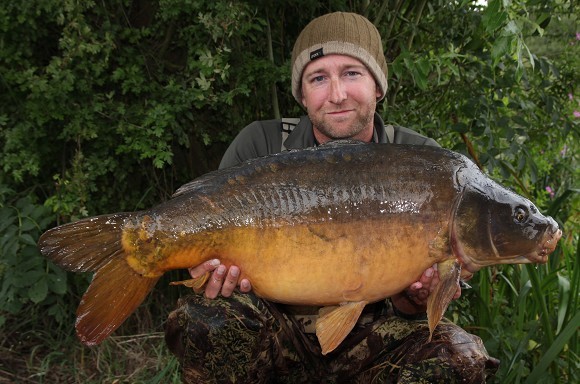
Location Corner: Mark Pitchers
Ever turned up to a lake and been unsure of what to head for? Here we describe a situation to a successful angler and get them to detail what they'd do.
Every carping pro will tell you: if you’re not on ‘em, you won’t catch ‘em! Wise words indeed, but is this easier said than done? How do you decide where to go and how to start your session? Well, that’s we want to find out from top angler, Mark Pitchers as we confront him with our hypothetical lake.
To get things started, we’ve told Mark he has three rods at his disposal and the conditions are spring like: mild with some sunny spells broken by some rain showers. The air-pressure is fairly average at 1012 and there is a 12mph SSW wind blowing. Okay, that’s the scenario, now lets see what swim Mark chooses to fish and where he’d cast his rods.

“Assuming this is a lake I’m totally unfamiliar with and have been unable to visually locate any carp since my arrival,” I feel that Peg 1 would provide me with a great starting point for the session,” reveals Mark. “This peg boasts a variety of different fish holding areas and with the warm (yet light) SSW breeze pushing down the lake, I would anticipate the now highly-active spring carp to be in close proximity, as they search for any natural food items carried on the breeze. This swim also gives me access to a variety of different depths, with 6-9ft in open water, as well as the shallower water on top of the gravel bar. So this would allow me to present baits at whatever depth the carp are residing and/or feeding.
“For anyone visiting waters for the first time, snaggy areas are always great starting points. Any form of structure will provide the carp with a sanctuary area, in which to escape the attentions of anglers, plus they also harbour large amounts of natural food to provide the carp with an easy meal. Features such as this tend to hold ‘resident carp’, which means regardless of the conditions or wind direction there is likely to be fish inhabiting these areas because of the benefits and security they provide. The gravel humps to the right of the swim also provide a form of underwater structure that the carp are likely to frequent.
“So, the three spots I would present my hookbaits would be: on the edge of the snags, on top of the gravel bar and finally at
the base of the gravel humps. In terms of the tactics, well, it’s hard to say, as these would vary depending on the size of carp present and stock levels, but unless the activity of these carp dictated otherwise, I would almost certainly start the session by being cautious with the bait application. At least until I knew the carp were indeed frequenting the area or until I have been able to ascertain any definitive feeding areas. Although I have marked Peg 1 as my number one choice, I would also keep a close eye on the shallow area (Peg 7) at the opposite end of the lake. During the sunny spells the carp may well end up in the shallows to take full advantage of the suns’ warming rays and I wouldn’t be at all surprised to see them working their way along the long reed-lined margin or around the influx of fresh oxygenated water. In this shallower water I would either reach for the small PVA bag trap, placed along their patrol route or if they were showing higher in the water column then obviously the Zigs and surface tactics would come in to play.”


